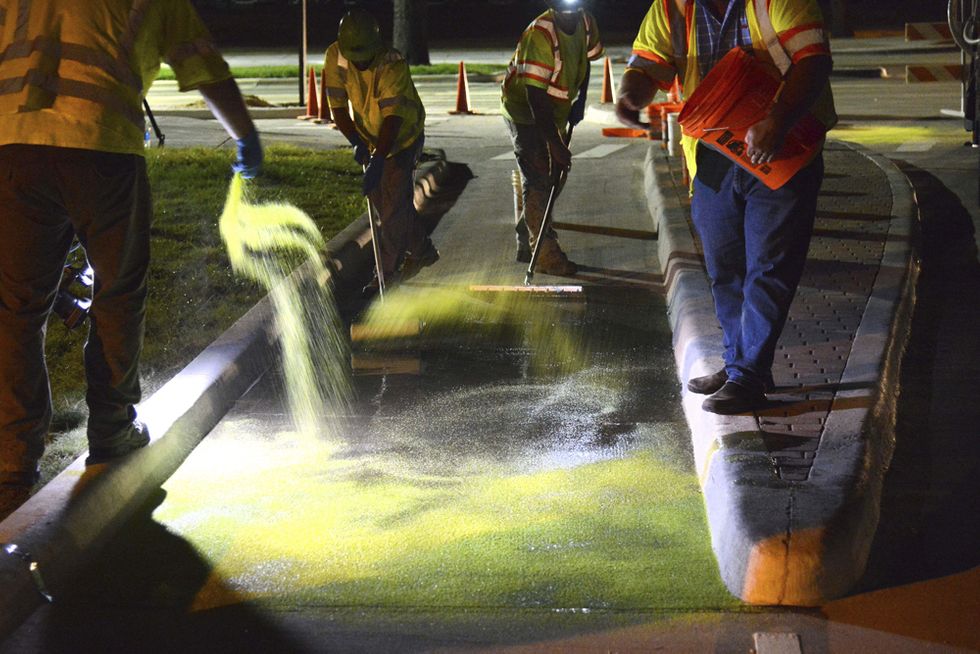Source: ecowatch.com
Published: February 8, 2017

Texas A&M students, teachers and staff no longer have to worry about cycling the campus’ busy Bizzell and Ross intersection at night thanks to an innovative glow-in-the-dark bike lane.
The university boasts that the lane is the nation’s first “non-signalized, Dutch-style intersection … [that] includes bright green solar luminescent pavement markings used to delineate the bicycle pathways.”
The project was inspired by similar glowing bike paths in the Netherlands, such as the “Starry Night” bike lane.
Texas A&M’s bike lane glows due to a solar luminescent paint. It soaks up the sun’s rays during the day and emits light when it gets dark. The lane is also the nation’s first to receive the Federal Highway Administration’s approval for the green coating it used.
Texas A&M’s Transportation Services and Texas A&M Transportation Institute completed construction in October.
According to Fast Company, “the university is now carefully studying how people use it, surveying the community about whether they feel safer, and considering whether to replicate the design in other parts of the campus.”

Texas A&M
The particular intersection was chosen as thousands of students navigate the crossing during the school week.
“We are excited to bring this kind of innovation and technology to the Texas A&M campus,” said Peter Lange, the associate vice president of Transportation Services. “We are confident the protected intersection will provide an added level of safety for bicyclists and drivers traveling in this area on campus.”
Another unique factor about the crossing is that it’s the first in the U.S. to operate without a traffic light, relying only on stop signs instead. This so-called “Dutch Junction” is specifically designed to help cyclists get across the street and protect them from vehicles and pedestrians.
“The key to its design is the islands at the intersection corners which separate cars and cyclists turning right; they also move cyclists traveling straight into the view of automobiles and away from their blind spot,” the university said.
“The marriage of the Dutch Junction design and explicit delineation of the bike lanes, with advanced materials that are highly visible both day and night, embody the concept behind the technology initiative—to enhance the safety and mobility options across the Texas A&M University campus,” said Robert Brydia, a senior research scientist at the Texas A&M Transportation Institute. “This is the first of many implementations and technology demonstrations planned over the next year.”

